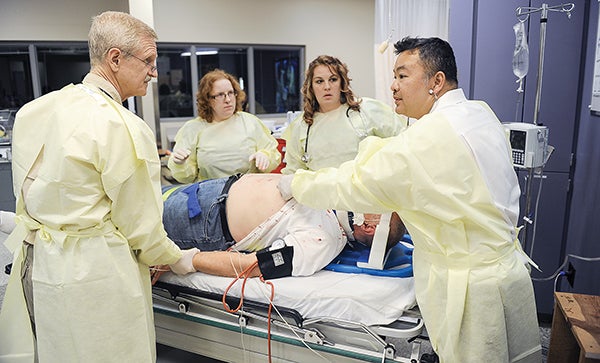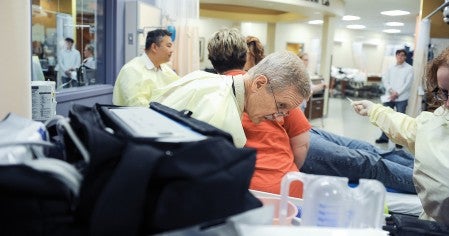Simulations demonstrate value
Published 12:01 pm Sunday, June 2, 2013

Volunteers attending the Minnesota Simulation Conference take part in a simulated gunshot wound in the simulation lab at Riverland Community College. Eric Johnson/photodesk@austindailyherald.com
As paramedics drove in a male patient with a gunshot wound, the doctors, surgeons, nurses and instructors who would attend him prepared.
They were concerned with the patient, but just as important were the dozens of people sitting inside classrooms, ready to watch them go to work. The patient may not have been real and the registered nurse may have been a surgeon in from, but the simulation experience was valuable for the medical staff gathered at Riverland Community College’s Austin campus.
Almost 100 instructors, nurses, doctors, and medical staff from across the U.S. gathered at Riverland Friday at the Minnesota Simulation Conference to learn more about classoom simulations and how to incorporate them into their organization.

Dr. Mark Jensen, a surgeon at the VA Hospital in Fargo, N.D., plays the part of an RN during a simulation for a gunshot at Riverland Community College during the Minnesota Simulation Conference at RCC Friday. Eric Johnson/photodesk@austindailyherald.com
“We’re trying to be a catalyst in the state and in the region to bring the simulation community together,” said Amy Wangen, training and development representative at Riverland.
Riverland staff have plenty of simulation experience, as the college regulary conducts simluation exercises between its health and law enforcement departments, notably the annual spring disaster simulation. The college designed its medical classrooms with simulation exercises in mind, and have this year marks the sixth disaster simulation, according to law enforcement instructor Steve Wald.
“We’re trying to prepare the students for what they’re going to actually see and experience out there,” he said.
Medical instructors and professionals traded simulation advice at the day-long conference Friday, which culminated in a simulation for some of the attendees present with the rest of the conference watching in classrooms. Wangen said she hoped all participants would be able to take something back to their hospital, medical center, or school to improve their simulations.
“The ultimate goal of all this is better patient outcome,” Wangen said.





